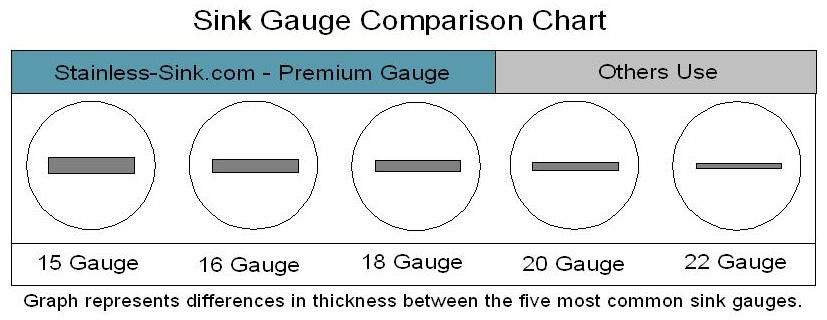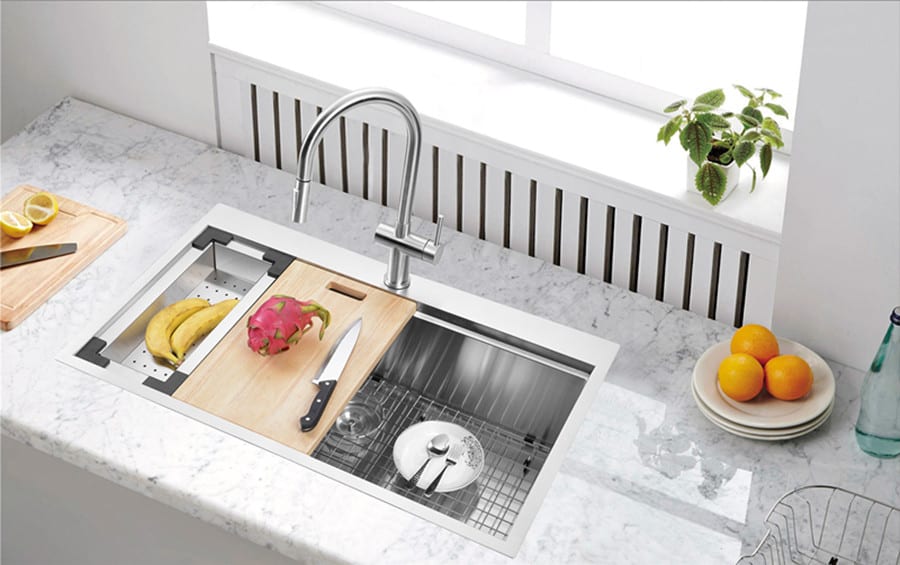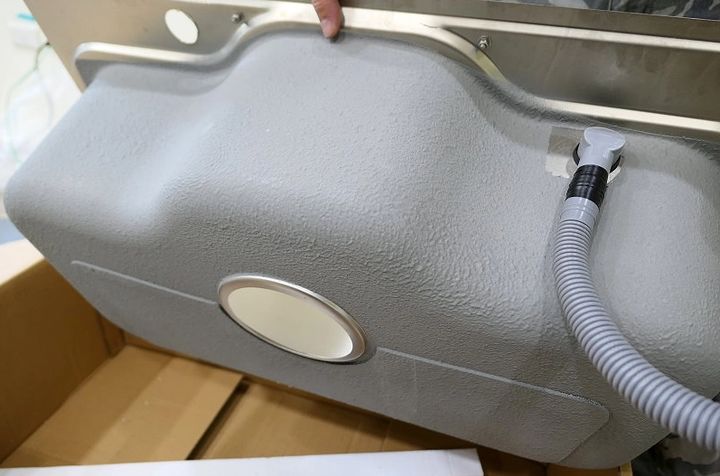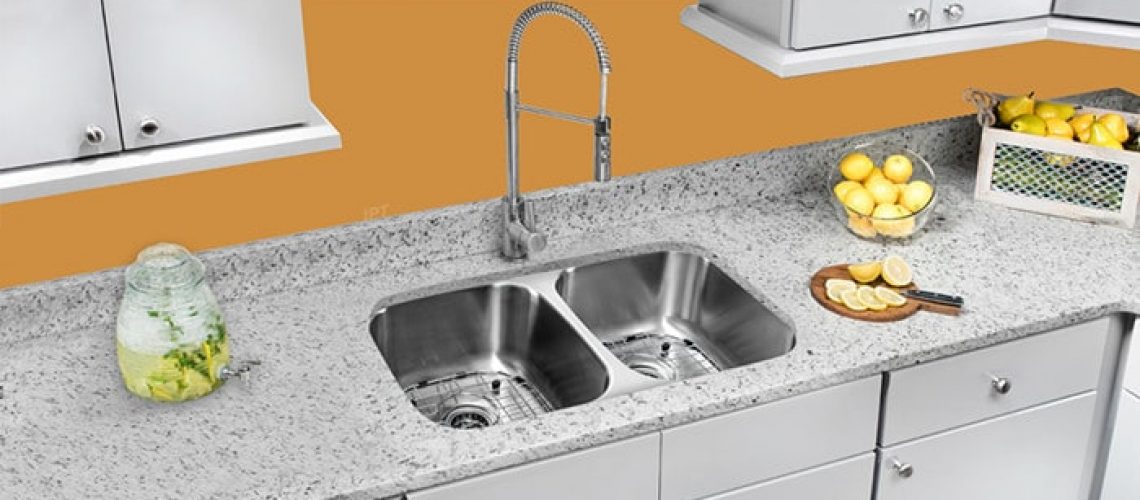Edelstahlspülen are a wise and durable choice for kitchen sinks. However, it is the most common material among the materials used to manufacture sinks.
Thanks to various shapes and sizes, they can easily integrate into any kitchen, whether traditional, modern, or designer.
Its price is affordable. It is durable and resistant to stains and corrosion. Because of this, it can last a very long time.
To find out if it is suitable for your kitchen, basic measurements and knowing the different sinks are good preparation when buying a new sink. It would be best if you also looked at the countertop style to choose the right sink. Here are a few tips and features about them.
1. The thicker the stainless steel sink, the better.
They are available in the following thicknesses, known as steel gauges: 16, 18, 19, 20, 21, and 22 mm. (millimeters)
The smaller the gauge, the thicker the steel sink. Thus, the thicker material used the sink, the more durability, and the less possible dents and corrosion.

2. Know the Grade
Stainless steel categories are assigned series numbers that indicate the elemental makeup of the material. Stainless steel sinks in the 300 series are the most sought after as they have higher chromium and nickel levels, the elements that add durability to stainless steel. 304 series stainless steel sinks are solid and corrosion-resistant.
3. Size matters
Measuring the kitchen benchtop is essential. Doing this will help identify the right size of the stainless steel kitchen sink you should buy and choose the type of sink that best suits your kitchen and choose whether it will be single or multi-basin, with drainer or without, etc.
4. Available styles and shapes
Most people prefer double-bowl sinks, mainly because of the convenience when working in them.
There are as many styles as there are purposes suitable for the use of the sink. Currently, you can buy single-basin, double-basin, and even triple-basin stainless steel sinks. The last two come in handy when you want to multitask.
There is also a wide variety from the classic or traditional style to modern designs models for kitchens.

As for systems of placement of kitchen sinks, which I will discuss later, the most common is to embed the sink in the countertop and leave it on the same using silicone.
However, today other options such as under-countertop placement avoid joints or flush integration, which facilitates cleaning.
5. Finish
When you’re shopping for stainless steel sinks, it’s easy to be drawn to the shiny mirrored finish found on polished stainless steel sinks. While this finish sparkles in the showroom, it’s notoriously difficult to maintain in the real world, as polished finishes show every fingerprint and smudge. For easier maintenance, choose brushed or satin finishes, which do a better job of hiding scratches and water spots.
6. Noise Control
As dishes, pans, and silverware rattle around in your sink, the impact of these items hitting the stainless steel can lead to excess noise in your kitchen. Even water spraying from the faucet can create unwanted sounds. While the steel gauge has little impact on sound levels, according to “Consumer Reports,” there are features you can look for to keep noise at bay. Sound pads and insulating foam are found in many undermount sinks, and these do a better job at reducing noise than special sound coatings found on some models.

7. Be clear about what type of faucet to choose
One last tip is that you should also have a clear idea of which kitchen faucet to choose when choosing a kitchen sink. If you don’t consider this, it may cause the faucet can not be installed after bought.
Final word
If you keep these seven tips in mind when purchasing a stainless-steel sink, you can be confident you’re buying a high-quality sink that will last you for years to come.










